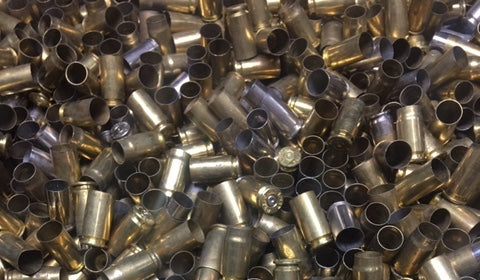Your Cart is Empty
Shop
Trade your brass for ammo credit in person or online.
Trade your brass for ammo credit in person or online.

Brass Exchange
2 Things You Need to Know about Defensive Rounds.
April 07, 2023 3 min read
"Hollow Point" does not always equate to "Defensive Round" and vice versa
In the beginner world of firearms, most shooters are introduced to two types of ammo: FMJ and Hollow Point. Typically your everyday range ammo is going to come in some variety of Full Metal Jacket, or Total Metal Jacket, likely with a Round Nose profile. (If you want to get into the weeds on the fine differences in bullet profiles, check out this article later). These range rounds are conical shaped bullets, really meant for a nice smooth feed and putting shots on paper.
Any new guy buyer has likely purchased these to get familiar with their firearm and break in their brand new piece. Likely, the gun store owner also said something like this: "Well, you're also going to need hollow points for defensive rounds too".
What happens next makes us lose sleep at night. The new gun owner purchases what he's given. A 20-ct box of insanely expensive hollow points. He loads his defensive mag after leaving the range and slaps it in his firearm for the "just in case" scenario. Then the mag gets dropped every range session, exchanged for range rounds and again-- slapped into the mag well upon returning to the car.
Le sigh....
Here's what you need to know about hollow points:
1. Not every hollow point on the planet is meant for defensive purposes.
Gasp! It can't be true! It is. Several projectile manufactures nationwide produce hollow points that are meant for a host of other things. Some hollow points are meant for accuracy; some of the meat of the projectile is removed to allow the bullet to maintain the same weight, yet be longer. A longer bullet makes more contact with the rifling in your barrel, creating stability and therefor accuracy.
Other hollow points, particularly in rifle projectiles are there to create a little bubble of air in front of the traveling bullet, reducing drag and allowing the bullet a truer flight path.
2. Not every defensive round is a hollow point.
Technology in projectiles has brought us some pretty great options for defensive purposes. While traditional hollow points are typically designed to pass the ole FBI protocol (penetrate through 7 layers of denim and embed deeply in soft tissue, yada yada), others are designed for a different defensive scenario. For example a total copper defensive projectile is meant to power through barriers and tumble in soft tissue, creating a devastating wound channel. With these, you won't see any expansion at all. This is especially appreciated by fellas in our next of the woods (Fort Bragg) that get deployed to take out the bad guy that just initiated a firefight, then jumped behind a barrier. While this likely isn't going to be your own defensive scenario, it's good to know your options.
We realize it is utterly impossible to predict what defensive situation you'll be in. We sincerely hope the answer is that you'll never ever be in any defensive situation at all because that would be horrible. But if you are, you can at minimum be sure that your ammo is actually intended to defend.
More importantly, PLEASE make sure that you run the ammo that you plan to bet your life on through your firearm several times. The last thing you want if you have to squeeze the trigger to save your own life is a malfunction. Sub-compact firearms are notoriously finicky when it comes to bullet profiles, so you may have to try a few different options before you find one that runs flawlessly.
Lastly, at Defender Ammunition Company, all defensive rounds are packaged in a quantity of 50 rounds for this exact reason. Run your gun! It may save your life.
Subscribe
Sign up to get the latest on sales, new releases and more …

